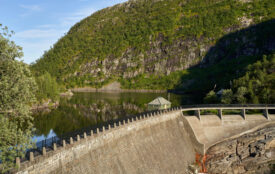World Energy Resources Report
Increase in renewables has led to an unprecedented change in energy supply.
The energy landscape has changed with most countries achieving a more diversified energy mix as well as a growth in community ownerships and an evolution of micro grids. The new World Energy Resources report launched at the 23rd World Energy Congress on 12 October reveals that the unexpectedly high growth in the renewable energies market, in terms of investment, new capacity and high growth rates in developing countries, is a key factor in this notable shift. It has contributed to falling prices and the increased decoupling of economic growth and greenhouse gas (GHG) emissions.
Speaking at the launch of the report, Hans-Wilhelm Schiffer, Executive Chair, World Energy Resources, said: “Our report finds that the diversification of technologies and resources, now applied in the energy sector, creates many opportunities, but the enlarged complexity also leads to increased challenges. With the existing level of volatility, relying on solid facts and data as basis for strategic decision making by the relevant stakeholders, such as governments, international organisations and companies, is becoming even more important than in the past.
“The total global renewable energy based power capacity has doubled within the last ten years, from 1,037 GW in 2006 to 1,985 GW by the end of the year 2015. This has been caused by a record deployment in particular of wind and solar capacity for power generation. Wind energy capacity increased globally from 74 GW in 2006 to 432 GW in 2015 (420 GW onshore and 12 GW offshore), solar energy within the same time horizon from 6 GW to 227 GW. Global hydropower capacity grew by 35 % since 2006, from 893 GW to 1,209 GW in 2015, of which 154 GW is pumped storage.”
Hydropower is the leading renewable source for electricity generation globally, supplying 71 % of all renewable electricity in 2015. 15% of all renewable electricity production in 2015 was based on wind, 5% on solar energy and 9% on biomass, geothermal and others together. The total renewable based power generation was 5,559 TWh in 2015, which is 23% of the total worldwide power generation of 24,098 TWh.
Christoph Frei, Secretary General, World Energy Council, said: “We have seen a dramatic increase of unconventional resources and no less dramatic technology improvement in the renewables space over the past decade. Oil will still be needed for transportation providing over 60% of energy needs but overall oil demand will flatten out. The golden age of gas will continue, with expected output growth between 25% and 70% by 2060.
“Renewables such as solar, wind and hydropower now account for about 30% of the total installed power generating capacity and 23% of total global electricity production and will continue to grow. However, more progress is urgently needed to scale up action on energy efficiency, electric storage and carbon capture and storage. With stagnating growth potential in the oil sector and with coal likely to be of little importance by 2060, there will be a shift in the discussion from stranded assets, predominantly enterprise owned, to stranded resources in oil and coal, predominantly state owned. This has the potential to cause significant stress to the current global economic and geopolitical equilibrium and will need to be part of a broadened carbon and climate dialogue.”
Further findings the Resources report highlights
●As of December 2015, 65 nuclear reactors were under construction with a total capacity of 64 GW. 40 of the units under construction are located in four countries: China, India and Russia and Korea. Currently there are more than 45 Small Modular Reactors designs under development and four reactors under construction.
● Global uranium production increased by 40% between 2004 and 2013, due to increased production by Kazakhstan, the world’s leading producer, finds a new World Energy Council report. Although there has been a significant transition in the energy sector some energy resources have challenges. Despite notable progress, the rate of improvements towards cleaner energy is far slower than required to meet emissions targets.
Download publication files:
- Executive Summary_World Energy Resources 2016 (136.45 kB)
- Summary report_World Energy Resources 2016 (3.68 MB)
- Full report_World Energy Resources 2016 (19.67 MB)








